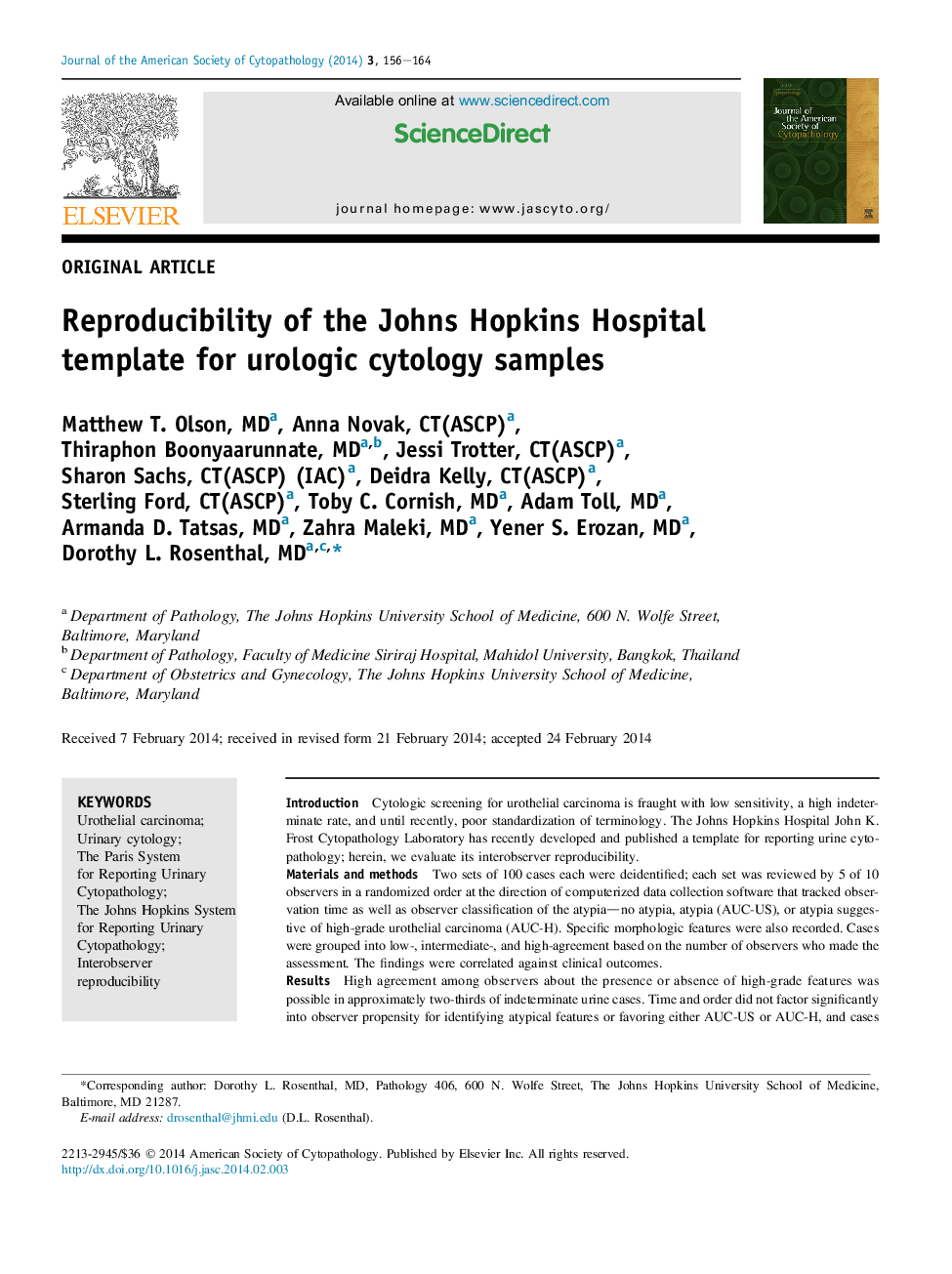| Article ID | Journal | Published Year | Pages | File Type |
|---|---|---|---|---|
| 2776629 | Journal of the American Society of Cytopathology | 2014 | 9 Pages |
IntroductionCytologic screening for urothelial carcinoma is fraught with low sensitivity, a high indeterminate rate, and until recently, poor standardization of terminology. The Johns Hopkins Hospital John K. Frost Cytopathology Laboratory has recently developed and published a template for reporting urine cytopathology; herein, we evaluate its interobserver reproducibility.Materials and methodsTwo sets of 100 cases each were deidentified; each set was reviewed by 5 of 10 observers in a randomized order at the direction of computerized data collection software that tracked observation time as well as observer classification of the atypia-no atypia, atypia (AUC-US), or atypia suggestive of high-grade urothelial carcinoma (AUC-H). Specific morphologic features were also recorded. Cases were grouped into low-, intermediate-, and high-agreement based on the number of observers who made the assessment. The findings were correlated against clinical outcomes.ResultsHigh agreement among observers about the presence or absence of high-grade features was possible in approximately two-thirds of indeterminate urine cases. Time and order did not factor significantly into observer propensity for identifying atypical features or favoring either AUC-US or AUC-H, and cases with high agreement about the presence of high-grade features were more likely to have a malignant follow-up. Furthermore, AUC-H diagnoses based on 2 or more high-grade features had a significantly higher malignancy risk than AUC-US diagnoses did.ConclusionsAUC-H is a valid diagnostic category with specific, reproducibly identified features that portend a higher risk of malignancy than the findings of AUC-US.
